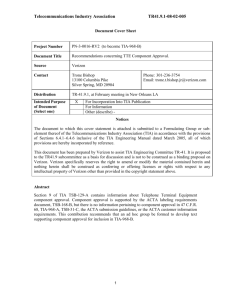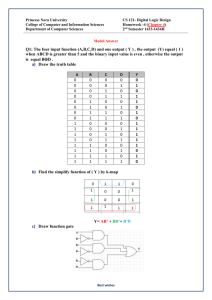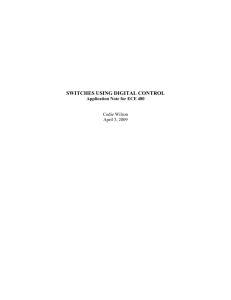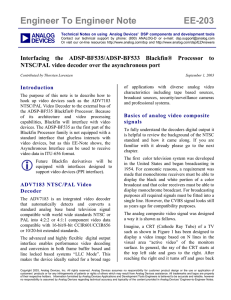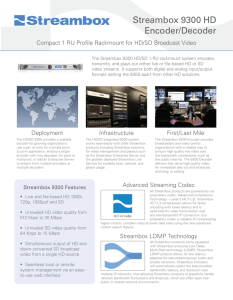TR41.9.1-08-02-008 Draft proposed text for requirements using a
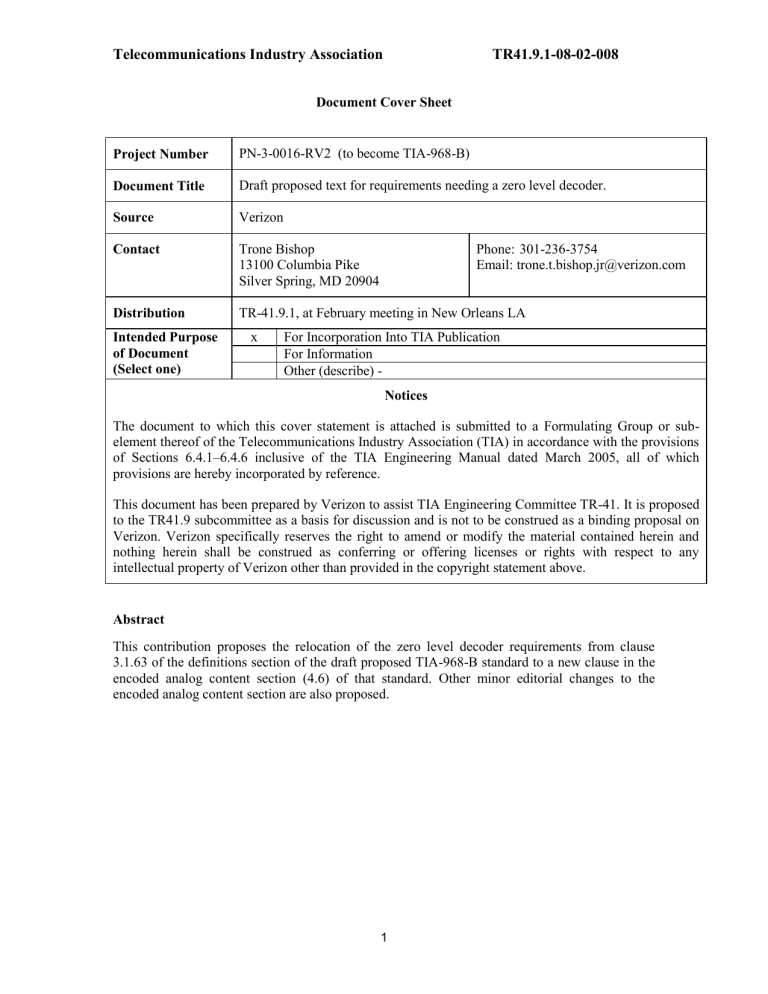
Telecommunications Industry Association TR41.9.1-08-02-008
Document Cover Sheet
PN-3-0016-RV2 (to become TIA-968-B) Project Number
Document Title Draft proposed text for requirements needing a zero level decoder.
Verizon Source
Contact Trone Bishop
13100 Columbia Pike
Silver Spring, MD 20904
Phone: 301-236-3754
Email: trone.t.bishop.jr@verizon.com
Distribution
Intended Purpose of Document
(Select one)
TR-41.9.1, at February meeting in New Orleans LA x For Incorporation Into TIA Publication
For Information
Other (describe) -
Notices
The document to which this cover statement is attached is submitted to a Formulating Group or subelement thereof of the Telecommunications Industry Association (TIA) in accordance with the provisions of Sections 6.4.1–6.4.6 inclusive of the TIA Engineering Manual dated March 2005, all of which provisions are hereby incorporated by reference.
This document has been prepared by Verizon to assist TIA Engineering Committee TR-41. It is proposed to the TR41.9 subcommittee as a basis for discussion and is not to be construed as a binding proposal on
Verizon. Verizon specifically reserves the right to amend or modify the material contained herein and nothing herein shall be construed as conferring or offering licenses or rights with respect to any intellectual property of Verizon other than provided in the copyright statement above.
Abstract
This contribution proposes the relocation of the zero level decoder requirements from clause
3.1.63 of the definitions section of the draft proposed TIA-968-B standard to a new clause in the encoded analog content section (4.6) of that standard. Other minor editorial changes to the encoded analog content section are also proposed.
1
Telecommunications Industry Association TR41.9.1-08-02-008
4.5.2.3.1 The total power delivered to the telephone network in the on-hook state as derived by a zero level decoder conforming to the requirements of 4.6.2 shall not exceed -55 dBm within the voiceband.
4.5.2.3.2 Approved protective circuitry for digital equipment shall also assure that the power to a zero level decoder conforming to the requirements of 4.6.2 does not exceed the above limits for any input level up to 10 dB above the overload point.
4.5.2.3.3 Reverse battery interface: The total power derived within the voiceband by a zero level decoder conforming to the requirements of 4.6.2, in the on-hook state, by reverse battery equipment, shall not exceed -55 dBm, unless the equipment is arranged to inhibit incoming signals.
4.6 Encoded Analog Content
Encoded analog content limits: If approved terminal equipment contains an analog-to-digital converter or generates a data bit stream that is intended for eventual conversion into voiceband analog signals in the PSTN, the encoded analog content of the digital signal shall be limited as specified in this clause4.6.1.
4.6.1 Encoded analog content limits: The maximum equivalent power of encoded analog content derived by a zero level decoder test configuration conforming to the requirements of 4.6.2 shall not exceed the following limits when averaged over any 3-second time interval: a) -9 dBm for all signals other than live voice, V.90 or V.92 modems, or network control signals. b) -6 dBm for V.90 or V.92 modems. c) -3 dBm for network control signals.
4.6.2 Zero level decoder requirements: For the purposes of determining compliance to the requirements in this standard, a zero level decoder shall:
1.
Have a digital input interface compatible with the digital interface under test;
2.
Comply with the pulse code modulation encoding µ-law specified in ITU-T G.711;
3.
Yield a 1000 Hz sine wave at a level of 0 dBm0 at its voice frequency output port when the periodic sequence of digital signals in Table 6 of ITU-T G.711 is applied to the decoder input; and,
4.
Provide 1000 Hz output signal levels that track with 1000 Hz input signal levels within +/- 0.25 dB over an input signal level range of +3 to -37 dBm0, within +/- 0.5 dB over an input signal level range of -38 to -50 dBm0, and within +0.5 to -0.9 dB over an input signal level range of -51 to -60 dBm0.
2


